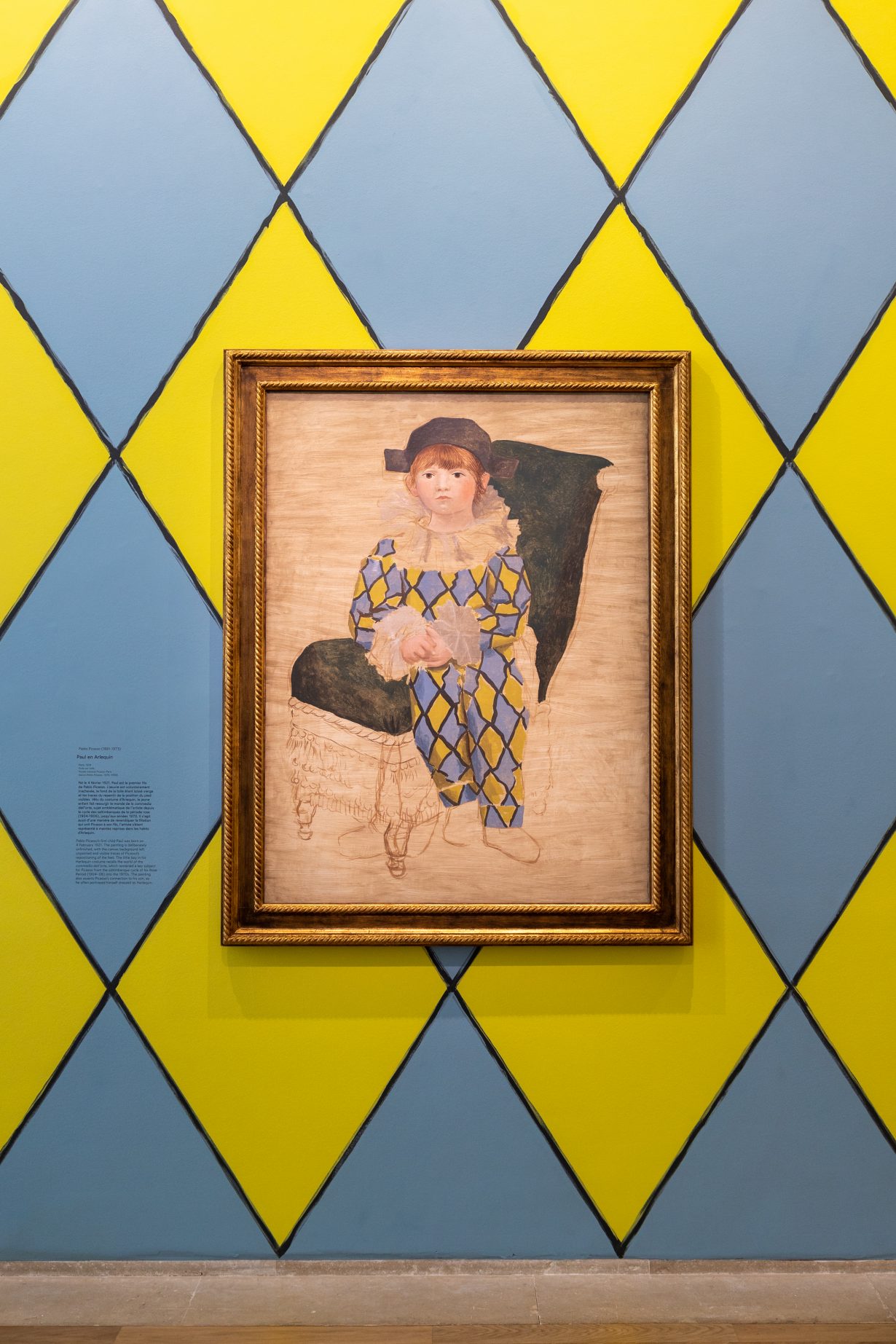As the Musée National Picasso-Paris redesigns its display of Picasso’s work, does the search for relevance obscure the art itself?
Do people want to look at old paintings anymore? The Musée National Picasso-Paris announced the rehang of its famous collection this month, to mark the fiftieth anniversary of Pablo Picasso’s death, with a new exhibition design conceived by British fashion designer Paul Smith. Smith has staged Picasso’s paintings (and drawings and ceramics) in rooms redecorated with vivid patterns, dramatic lighting and walls collaged with historical posters for Picasso’s gallery shows and fashion covers from Vogue. ‘Hopefully,’ Smith muses in the accompanying catalogue interview, ‘we’ve managed to put together more of a visual experience, in a way that is interesting for younger audiences… that are not very knowledgeable about the work of this great master.’
You might wonder how looking at paintings by this legendary twentieth-century modernist might not be much of ‘a visual experience’, but then Smith’s point is really about the worry that ‘younger audiences’ aren’t very interested in all this old modernist stuff. What, after all, is ‘relevant’ to twenty-first century gallery-goers? But Smith’s intervention is only half the story. Alongside Picasso’s works and Smith’s zingy designs are installed recent works by artists Mickalene Thomas, Chéri Samba, Obi Okigbo and Guillermo Kuitca, works that view Picasso’s works through the lens of cultural debates that, the museum’s curators imagine, are much more relevant to contemporary audiences. Samba’s and Okigbo’s works point to how Western modernist artists (Picasso perhaps most enthusiastically of all) quoted, borrowed and appropriated from African art during the century in which European powers built vast collections of looted and expropriated works. Meanwhile, Thomas’s Resist #8 (Pitcher and Skeleton) (2022), combines images of African-American women from civil-rights era protests, surrounding an ironic cubist-like rendition of a woman taking the pose of Jean-Auguste-Dominique Ingres’s Grande Odalisque (1814), a low-point of Western art’s Orientalist obsession with the exotic non-Western world. Questions of women’s objectification, of the ‘male gaze’ and of black women’s further marginalisation in the history of Western, male, white modern art collide here.

‘We wanted to open up the museum, reach a wider audience and bring in all those debates: on women, post-colonial issues and politics… We wanted to make Picasso relevant,’ the Musée Picasso’s president Cécile Debray explained to The Guardian. These are indeed current debates, which indict large swaths of the Western modernist canon, Picasso included. After all, it’s easy to see that Picasso ‘appropriated’ African art, starting with his pivotal canvas Les Demoiselles d’Avignon (1907). Nor was Picasso atypical of the sexism that coursed through modernist art: idealising the female body was the flipside of Picasso’s lifelong womanising, philandering and emotional cruelty to his partners, the painter once infamously declaring that ‘for me there are two kinds of women, goddesses and doormats’.
In the post-#MeToo, post-Black Lives Matter era, museums of modernist art contend with the hostility or indifference of audiences tuned to feminist and postcolonial critiques of Modernism. These radical revisions of how we look at this art emerged around the same time Picasso himself finally became history: then, they were critical in dismantling Modernism’s unscrutinised assumptions about (male) genius and creativity, and of Western art’s supremacy over that of other cultures. Now they’ve become standard in academe and in commonplace in wider cultural discussions.

But the trouble with ‘relevance’ is that while these critiques are important ways of thinking about how art is made, they can only tell us so much about what artworks do in their own right. Picasso may have been a male-chauvinist shitbag, but his paintings are not the sum of their appropriations, nor the unmediated expression of his vices. Yet such preoccupations now dominate how curators think about how to interpret an increasing swathe of historical art, making art ‘relevant’ to today’s audiences by making simplistic connections with contemporary talking points. It’s perhaps why so much art-historical curating now feels like the wilful overwriting of today’s political preoccupations onto the past.
The irony of making past art ‘relevant’ to millennial audiences, assumed to be too distracted or self-obsessed to care, is that it can only guarantee that art’s irrelevance, since it can never live up to the demands made of it in the present. Rather than try to explore what might still be valuable about historical artworks, museums become places to catalogue their inadequacies; at which point one might ask why it wouldn’t be simpler to close museums altogether.
But millennial audiences are perhaps not so indifferent to what was valuable about old Modernist painters: while the Musée Picasso frets over whether Picasso can still be seen without being freighted with feminist and postcolonial critique, audiences (some of them young people!) flock to the new generation of ‘immersive’ exhibitions – of Claude Monet, Vincent van Gogh, Gustav Klimt and Frida Kahlo, among others – animated video-projection spectacles that bring the work of those stars of the modernist canon into the age of the selfie. Art critics may sniff at this ‘tawdry genre’ (as one British critic put it), but maybe they reveal a public’s enduring enthusiasm for the visual originality of much of the modernist canon. While Smith designs what amounts to an ‘Immersive’ surrounding to counteract the anxieties of curators who don’t seem to know what there is to like about Picasso anymore, Imagine Picasso – The Immersive Exhibition will open in May in São Paulo.
